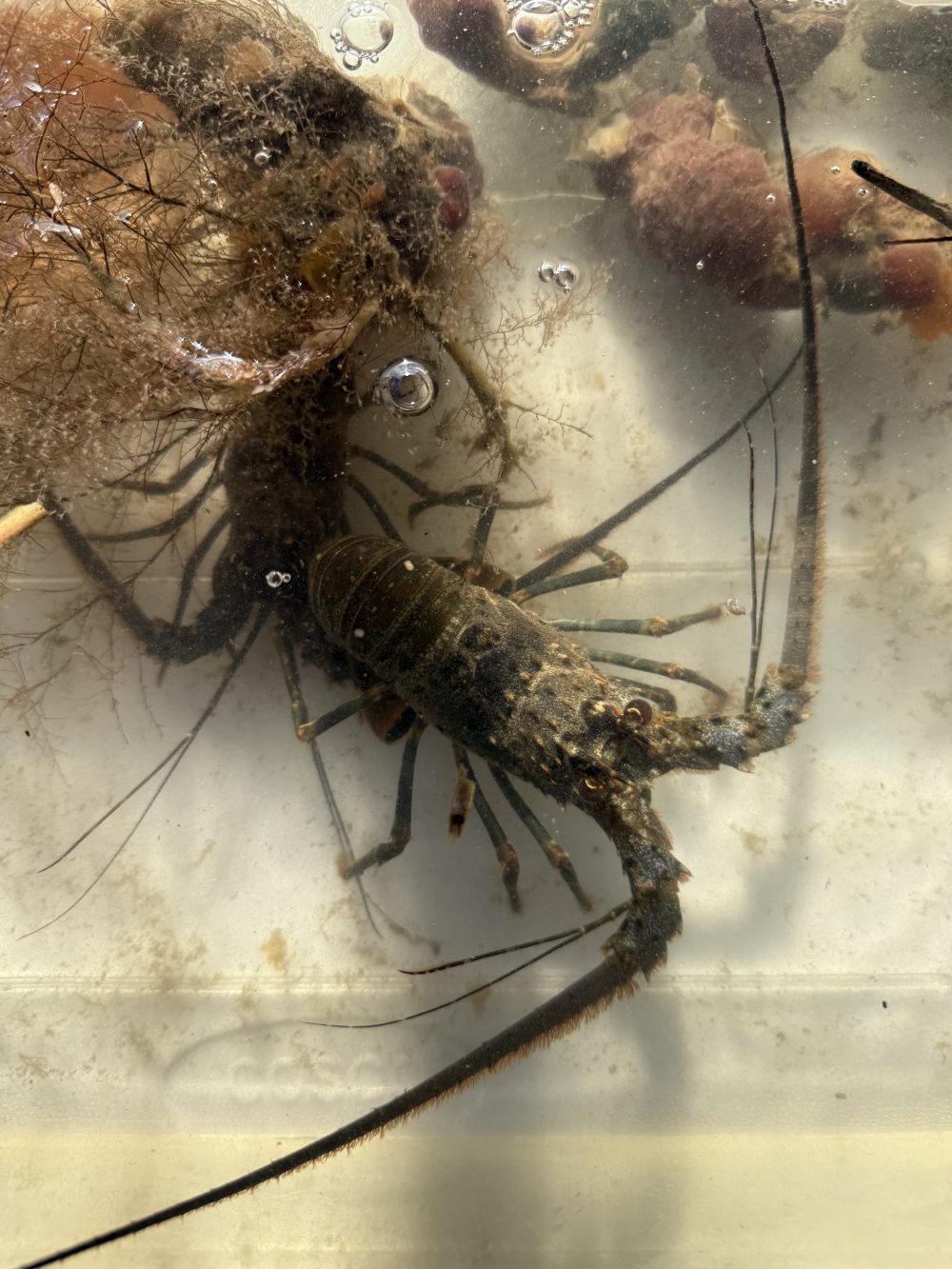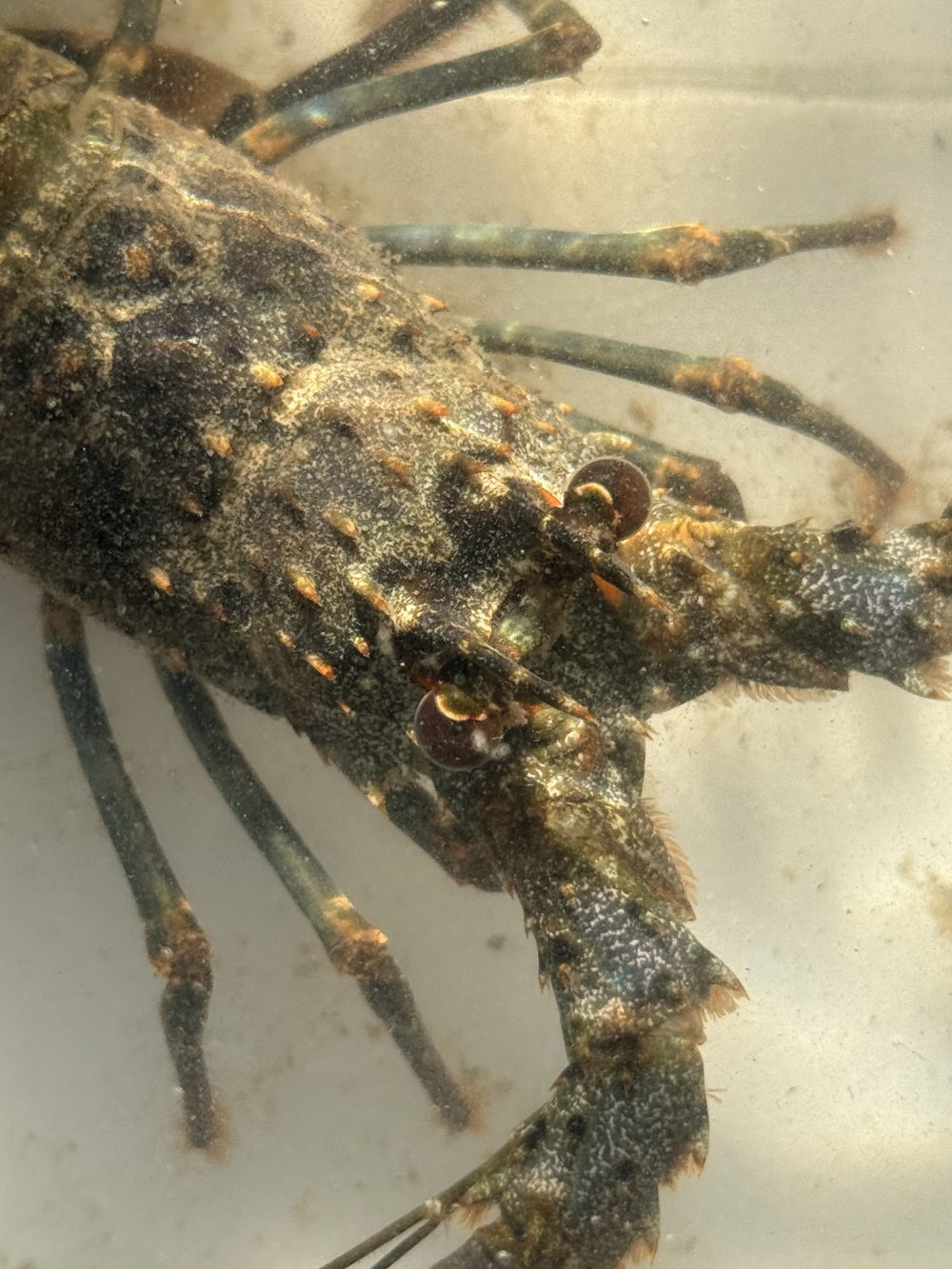Bring in the dancing lobstas!

Did you know the Caribbean spiny lobster (Panulirus argus) is found from the costal waters of North Carolina to the Gulf of Mexico, Caribbean Sea, and all the way to Brazil? Along South Carolina’s coast, they are often found in the state’s offshore waters, particularly around reefs, wrecks, and nearshore structures like docks. These lobsters thrive in coral reefs, seagrass beds, and rocky outcrops, where they seek shelter in crevices to avoid predators. With their long, spiny antennae and distinct body markings, they are easily recognizable. Adult spiny lobsters can grow up to 3 feet in length, but they generally average about 1-2 feet. The youngest spiny lobsters will filter feed on plankton. The juveniles and adults will eat clams, snails, and crabs, which they forage for at night. Interestingly, the spiny lobsters don’t have claws like other lobsters but have forward facing spines to deter predators. During migratory periods these lobsters can be found moving to warmer waters with a soft substrate & seagrass. They also can be seen migrating in a single file line!
In South Carolina, the fishing regulations for Caribbean spiny lobsters aim to protect their populations and ensure sustainable harvesting. If you have a SC saltwater fishing license you are allowed to harvest two per person per day as long as the carapace is 3 inches in length. Additionally, if you catch a female lobster carrying eggs (berried), it must be released immediately to help preserve future generations. These measures, along with size and catch limits, ensure that lobster populations remain healthy and sustainable. While Caribbean spiny lobsters are not currently listed as endangered, their populations face threats from overfishing, habitat destruction, and climate change. Conservation efforts are in place to protect these fascinating creatures, including creating marine protected areas and encouraging sustainable fishing practices. As an important species in their ecosystem, spiny lobsters help regulate the populations of smaller invertebrates and contribute to the health of coral reefs and seafloor habitats. To double check South Carolina’s fishing regulations check out DNR’s E-Regs page.

